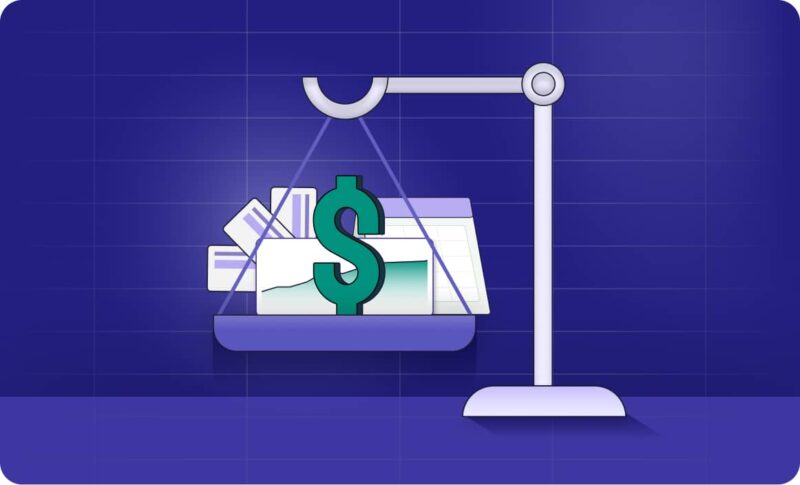Running a business means making a lot of quick decisions. Sometimes, things change overnight—unexpected bills pop up, a client pays late, or you need to jump on a last-minute opportunity. When that happens, having access to cash can make all the difference. That’s why business liquidity isn’t just a finance term—it’s something that can help you stay in control.
In this article, we’ll break down what liquidity means, why it matters, and how you can stay agile without getting overwhelmed by complex strategies.
Understanding Business Liquidity: Why It Matters

Liquidity refers to how quickly your business can get access to cash. It’s not about how much you’re worth on paper—it’s about what’s available right now. If you need to cover payroll, pay rent, or fix a broken machine, you can’t wait weeks for money tied up in inventory or unpaid invoices. You need funds you can actually use.
One of the easiest ways to improve liquidity is to keep some cash in a separate business savings account. Many business owners also choose high-yield savings accounts to make the most of their idle funds. That’s where it helps to understand what is APY in banking. APY, or annual percentage yield, shows how much interest you can earn on your savings in a year, including compounding. While your main goal is fast access to money, earning a little extra interest on the side is a bonus.
Liquidity gives your business the flexibility to move quickly and make smart choices without relying on credit or cutting corners. It’s the cushion that protects you from stress when the unexpected happens.
Liquidity vs. Profitability: What’s the Difference?

Many business owners think that if their business is profitable, they don’t have to worry. But that’s not always true. Profitability and liquidity are not the same thing.
Let’s say your business had a great sales month, but your clients won’t pay their invoices for another 45 days. On paper, your income looks solid. But if your bills are due this week and your bank account is low, you’re in a tough spot. You’re profitable but not liquid.
Profit shows how much your business earns over time. Liquidity shows how easily you can access cash when you need it. A healthy business needs both. Keeping an eye on liquidity helps you avoid surprises and gives you breathing room, especially during slow seasons or delays.
Easy Ways to Improve Liquidity
The good news is that improving liquidity doesn’t have to be complicated. Here are a few practical steps you can take:
- Open a dedicated savings account. Even a small monthly transfer into a business savings account adds up over time and keeps money available for emergencies.
- Use digital tools to track cash flow. Apps like QuickBooks or Wave can show you how much is coming in and going out in real time. Knowing your cash position daily helps with smart decisions.
- Offer early payment discounts. Give clients a small discount for paying invoices early. It’s a win-win—you get cash faster, and they save a little.
- Negotiate better terms with vendors. Ask for longer payment windows from suppliers so you can hold onto your cash a little longer.
- Automate invoicing and follow-ups. Getting paid faster helps your cash position. Automating reminders ensures nothing slips through the cracks.
You don’t need to overhaul your entire system. Even small changes can lead to better liquidity and less stress.
What Drains Liquidity (and How to Avoid It)
Just as there are smart ways to improve liquidity, there are also common traps that reduce it. Here are a few things to watch out for:
- Overstocking inventory. Buying more than you need can tie up cash in products that sit on shelves.
- Hiring too quickly. Bringing on new employees before your cash flow can support them can backfire.
- Short-term debt. Taking on loans without a clear repayment plan can lead to tight spots.
To avoid these problems, review your expenses every month. Ask yourself what’s really needed and what can wait. Hold off on large purchases until you know your cash position is strong. Focus on keeping your business lean and responsive.
Choosing the Right Bank Accounts for Liquidity Needs
Not all business bank accounts are the same. If you want to keep your cash accessible and still earn a little interest, it’s worth shopping around.
Look for accounts that offer:
- No monthly fees
- Easy online access
- Quick transfers between accounts
- Competitive interest rates
Some accounts, like business money market accounts or high-yield checking, give you the best of both worlds—easy access to funds plus some growth over time. Just make sure you understand the terms and any limits on withdrawals.
While interest shouldn’t be your main focus here, earning even a small return on your liquid cash is better than letting it sit idle.
When to Prioritize Liquidity Over Growth
Growth is important, but there are times when staying liquid should come first. Here are a few examples:
- Economic uncertainty. When markets are unstable or business is unpredictable, cash helps you stay steady.
- New product launches. Testing new ideas always involves risk. Having liquidity lets you pivot if things don’t go as planned.
- Tight margins or delayed payments. If your income isn’t steady or you’re operating on slim profits, liquidity keeps you afloat.
Being too focused on growth can lead to cash shortages. Expanding too fast or reinvesting everything without holding back any cash can leave you vulnerable. Liquidity protects you from that.
Cash is what keeps a business moving. While long-term success depends on many things—profitability, marketing, growth—none of that matters if you don’t have money when you need it. By paying attention to your liquidity, you’re giving your business the flexibility to move quickly, cover sudden costs, and take advantage of opportunities. It’s not about playing it safe. It’s about being smart and staying ready.
Simple habits like saving regularly, tracking cash flow, and choosing the right bank accounts can make a big difference. The more you build liquidity into your day-to-day operations, the less you’ll have to scramble when things don’t go as planned.
Being liquid isn’t just good finance—it’s good business.

